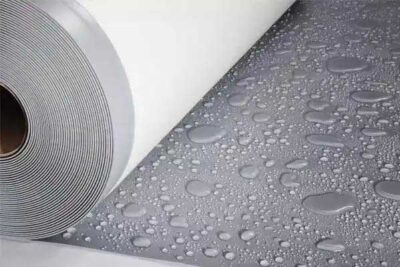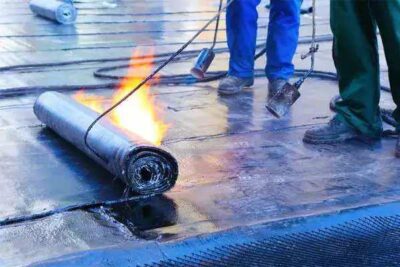
Contents
The reason for having roof insulation is basically the applications made with the aim of protecting your building and prolonging the life of your building. Roof insulation not only extends the life of your building, but also helps you to prevent diseases that may arise due to humidity and humidity inside the building.
Is the roof of your building leaking? Whatever the cause of the problem, from age to weather-related damage, a small leak can set off a nightmarish fight for your business. But you don’t have to allow roof leaks! The flat or low slope metal of your building, EPDM, PVC or other type of material roofing can be restored rather than completely replaced. Are you afraid that the leak will mean completely removing your roof and replacing it at great expense? We are here to assure you.
There are many options for roof insulation, depending on what your building’s roof is made of or how it was originally built. Today we take a look at what these options are and how each can effectively stop leaks. Unlike full replacement, all available types of insulation will provide minimal operational disruption. They will also last at least 18 years and many longer. Which option is right for your roof?
Metal Roof Insulation
If your roof is made of metal, a new coating system may be required to provide excellent protection. Due to the nature of their materials, metal roofs begin to rust over time. It develops weak spots, especially along seams, which if not handled can potentially lead to widespread moisture leaching. Because many metal roofs cover warehouses full of valuable stock for retail and wholesale businesses, leaks can mean dilapidated products that cannot be sold quickly. If your metal roof hasn’t had routine maintenance during its lifetime, future leaks are a guarantee. So what does metal roof insulation mean?
Designed specifically to address these problematic seams, metal roof insulation is heavy as you carefully prepare the surface and seams to get the final coating. In fact, technicians will spend most of their time in preparatory work during the restoration of a metal roof. Priming to neutralize existing rust and protect against future rust is the first step after plugging each fastening head and potential weak spot. This comprehensive process ensures that old problems cannot escalate and new ones do not arise.
Then, the process of waterproofing the seams with butyl tape or fabric material continues. Two base coats are then applied to compact the material and ensure a waterproof bond is established. After all these preparations are completed and the base coats have dried, the reflective topcoat is applied. As this finish reflects the sun’s rays, besides stopping leakage, it saves you money on your energy bills.
Spray Foam System
For flat and low-slope roofs, whatever is currently made, polyurethane spray foam (SPF) is an insulation option that has gained popularity in recent years. When applied by experienced commercial roofing professionals, it is guaranteed 100% leak proof and is backed by a strong warranty for both product and installation service. Our Spray Foam System in Unlimited Roofing System has many benefits, including natural reflective and insulating properties that reduce your building’s cooling bills in the summer and heating bills in the winter. It is also easy to renew in the future with additional applications.
The most important part of the restoration process with the SPF system is careful installation. Because the material is a sprayed liquid that expands in foam, your building’s existing roof needs to be clean and dry to ensure proper adhesion. Loose dirt and debris are carefully vacuumed first. Installation can only be done on non-windy days in warm and dry weather. So depending on the forecast, you may have to wait until the weather is cooperative before the project starts. Of course, the durable strength of SPF systems is worth a little patience during the installation process!
Our SPF system is applied in three layers after your roof is prepared. First, a base layer of about an inch thick is applied to the entire roof surface to provide insulation. After a final coat comes an acrylic latex coat. Once all three layers are in place, your roof has a tough, waterproof barrier that will last for many years. It is so sturdy that you can even walk over the entire surface without fear of damage or creating weak spots.
Membrane Coating
If your commercial roof is currently made of the most common roofing materials containing PVC (Polyvinyl Chloride), TPO (Thermoplastic Polyolefin), EPDM/Thermoset, another single-ply type of rubber, or modified bitumen, a waterproofing membrane coating is your best insulation option. It prevents leakage and fixes problematic weak spots by creating a seamless protective barrier that gives your roof a new ability to protect against all weather conditions, even hail. It is also reflective. This saves you real money on cooling costs in hot summer weather.
As with our SPF system, the first step to properly restoring your roof with a membrane coating is to create a surface that promotes strong adhesion. Your roof is thoroughly cleaned before installers begin work to carefully seal the existing seams. As we mentioned earlier, seams on roofs of various types are the weakest points. In the membrane coating insulation process, they are covered with a 5-inch fabric that has an embedded base coat and creates a tough and waterproof barrier. After all this preparatory work is completed, the final reflective coating is applied directly to the roof.
Single Layer Membrane Roof Insulation

This restoration option goes beyond veneers that make it unique from the rest. Ideal for the restoration of various types of flat or low-pitched roofs, the single-ply membrane is 100% waterproof and leak proof. However, it has the advantage of being installed in all seasons. It also performs well in any climate. It is particularly resistant to strong winds.
The process of installing a single-ply membrane system begins the same way as installing most coating options. Thoroughly clean the surface of the roof so that loose dirt or debris does not interfere with creating a smooth surface. This is especially important as the next step in the installation process is the application of wood stock (layers of wood) to create the best possible layer for the membrane. The membrane is then applied with complete overlap of the material to help the water flow.
Spilling water on commercial roofs is a common problem, but this method of overlapping the membrane reduces standing water. These overlapping areas create seams in the material, while our single-ply membrane restoration system creates a watertight seal using a robotic seam welder. After the seams are welded, every remaining nook and cranny on your roof is carefully sealed with a weatherproof sealant to keep water from slipping anywhere.
There is a wide variety of options when it comes to restoring the old roof of your commercial building. Don’t stop imagining the possibility of a complete roof replacement and all the business disruptions. Such a large project will require and consider a very business friendly insulation process.







